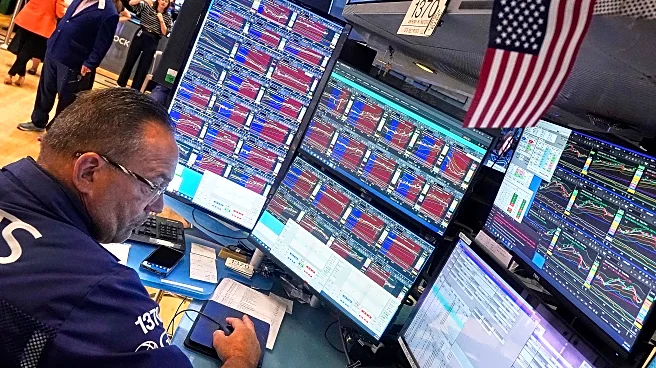Rapid Read • 8 min read
The upcoming week is set to be pivotal for the US markets, with key events such as the Jackson Hole Symposium and the release of the Federal Open Market Committee (FOMC) minutes. These events are expected to provide insights into economic policy and potential interest rate changes. The Jackson Hole Symposium, attended by central bankers and economists, will focus on labor markets and macroeconomic policy. Meanwhile, the FOMC minutes will reveal discussions from the recent monetary policy meeting, where interest rates were held steady amid tariff concerns.
AD
The Jackson Hole Symposium and FOMC minutes are critical for investors and policymakers as they offer guidance on future economic policies and interest rate trajectories. The outcomes of these events could impact market sentiment, influencing stock prices and investment strategies. A potential rate cut, as hinted by recent economic data, could stimulate economic growth and affect inflation rates. These developments are particularly significant in the context of ongoing tariff discussions and geopolitical tensions, which have been influencing market dynamics.
Market participants will closely monitor speeches and discussions at the Jackson Hole Symposium, especially those by key figures like Federal Reserve Chair Jerome Powell. The FOMC minutes will be scrutinized for any indications of future rate adjustments. Investors will also pay attention to global economic data releases, including housing starts and PMI flash numbers, which could further influence market trends. The geopolitical landscape, including meetings between India, China, and Russia, will also be watched for potential impacts on trade and tariffs.
The focus on labor markets and macroeconomic policy at the Jackson Hole Symposium may lead to discussions on long-term economic shifts, such as demographic changes and productivity challenges. These factors could have lasting effects on economic growth and employment patterns. Additionally, the interplay between US monetary policy and global economic conditions highlights the interconnected nature of modern economies, where decisions in one region can have ripple effects worldwide.
AD
More Stories You Might Enjoy












